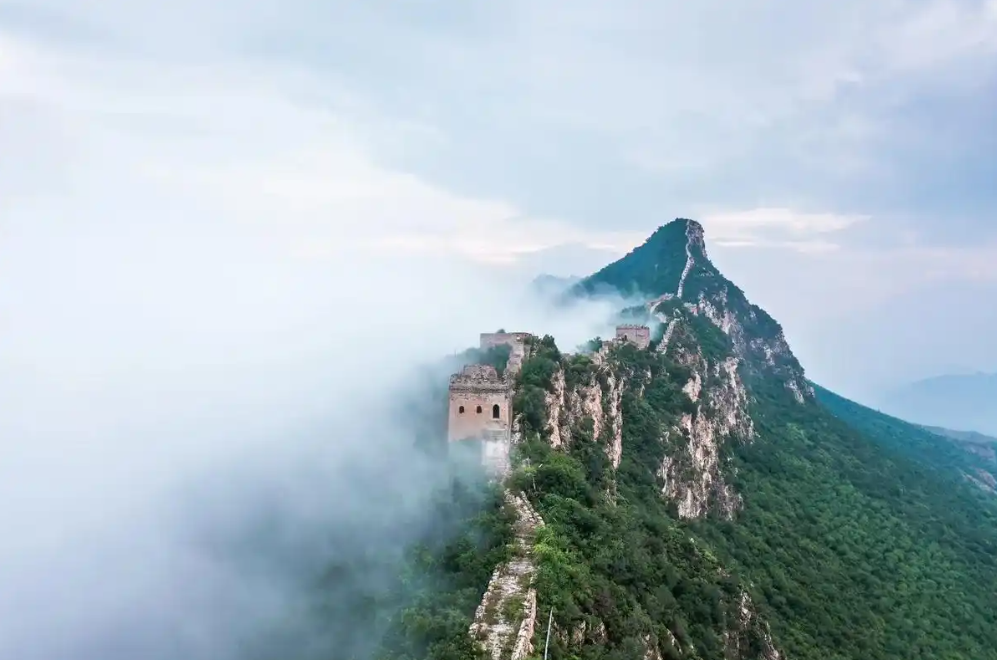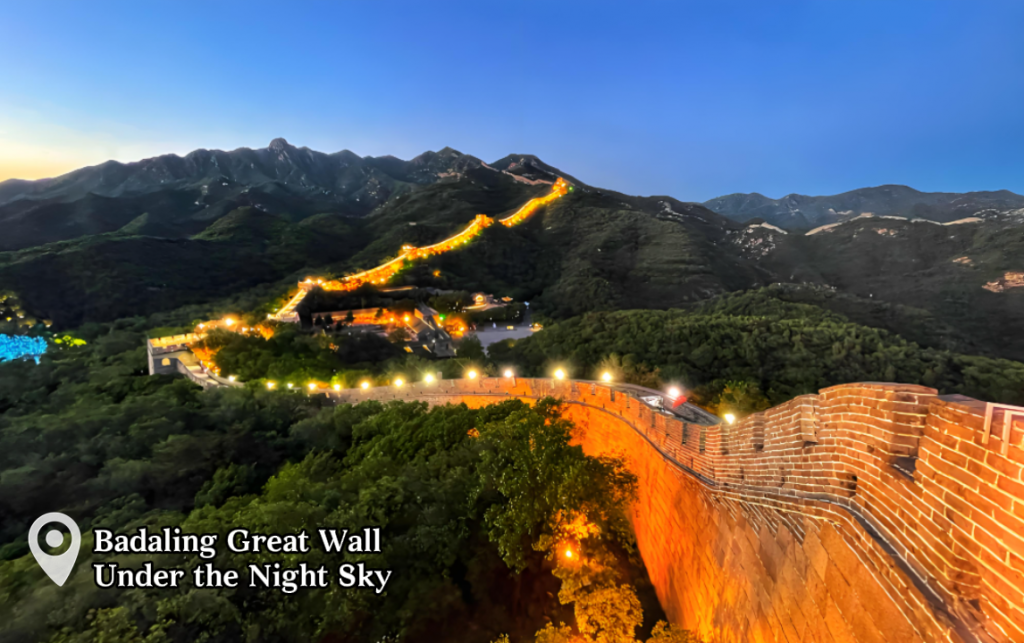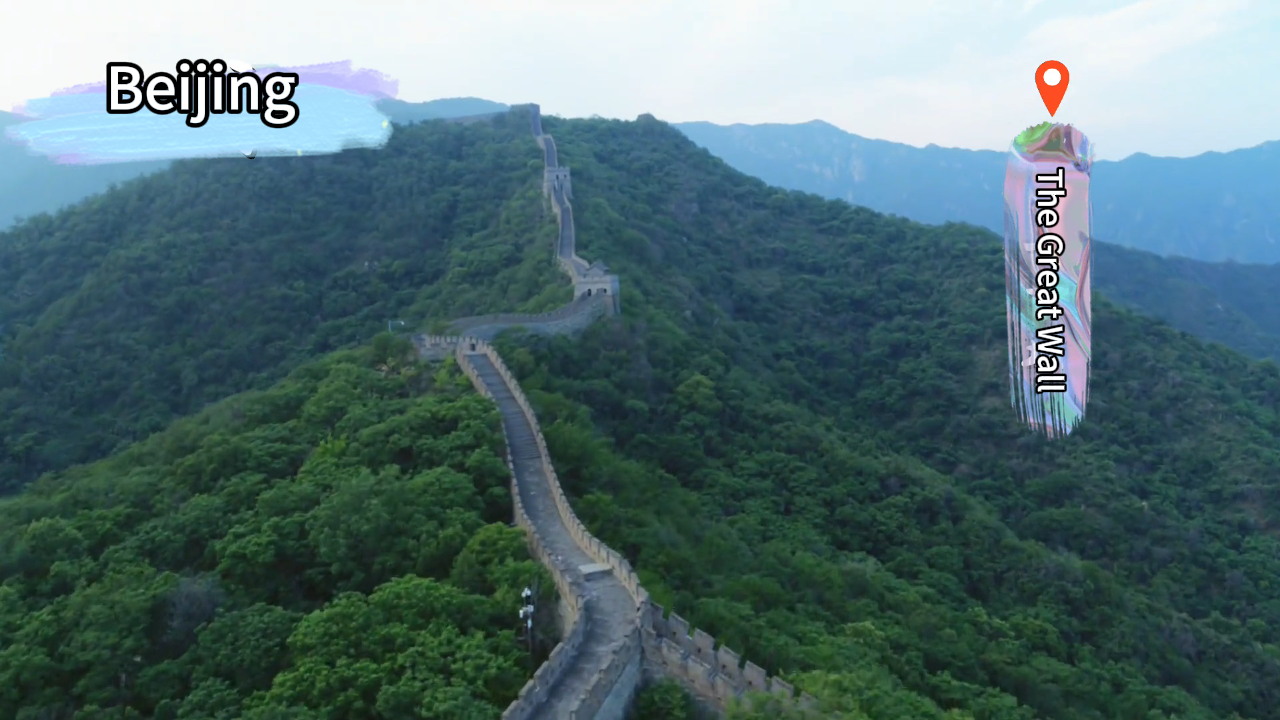As a UNESCO World Heritage Site, the Great Wall of China stands not only as a symbol of the Chinese nation but also as one of the most magnificent architectural marvels in human history. Stretching from Shanhaiguan to Jiayuguan across 15 provinces and cities, different sections of the Wall showcase distinct landscapes and historical legacies. Below is a curated guide to the most worthwhile routes, practical tips, and immersive experiences.
I. Must-Visit Classic Sections
1. Badaling Great Wall: The Most Accessible Choice
- Features: The best-developed section with perfect facilities, including cable cars, slides, and barrier-free pathways, making it ideal for families and first-time visitors.
- Highlights:
- Stand on the “Hero Stone” inscribed with Mao Zedong’s famous quote, “He who has not climbed the Great Wall is not a true hero.”
- Experience the Night Great Wall (open in summer), where the walls are illuminated to evoke a sense of historical grandeur and romance.
- Transportation:
- Take Bus 877 from Deshengmen in Beijing (1.5 hours, ¥12).
- Take a high-speed train to Badaling Station (30 minutes, advance booking required).
2. Mutianyu Great Wall: Serenity and Steepness Coexist
- Features: With 96% vegetation coverage, it’s known as “the most beautiful section of the Great Wall,” offering a quieter atmosphere for hiking enthusiasts.
- Highlights:
- Enjoy a combination of an aerial cable car ride (offering panoramic mountain views) and a thrilling toboggan slide descent (1,580 meters long with a 320-meter drop).
- Explore the unrestored “wild wall” sections (with a guide for safety) to touch the original rammed-earth walls and feel history firsthand.
3. Simatai Great Wall: Extreme Adventures and Starlit Views

- Features: Named by the Times (UK) as “one of the 25 places not to be missed globally,” it retains its Ming Dynasty original structure and is renowned for its steep, dense, and unique architecture.
- Highlights:
- Challenge iconic sections like the “Single-Side Wall” and “Fairy Tower,” and overlook Miyun Reservoir from Wangjing Tower.
- Stay in Gubei Water Town and attend the “Great Wall Starry Town” light show at night, or join stargazing photography workshops.
II. Immersive Experiences and Hidden Gems
1. Hiking Trails
- Classic Routes:
- Jinshanling to Simatai (10 km, 4–5 hours): Trek through “the most beautiful section of the Wall,” passing by elaborately carved watchtowers.
- Jiankou to Mutianyu (8 km, 5–6 hours): Tackle challenging segments like “Eagle Flying Uphill” and “Beijing Knot” (suitable for experienced hikers; carry ample water, food, and sun protection).
2. Cultural Exploration
- Visit Shanhaiguan’s “First Pass Under Heaven” to learn about the Ming Dynasty’s garrison system.
- Explore Yanmen Pass in Shanxi and revisit historical tales like “Wang Zhaojun’s Journey Beyond the Great Wall” and “The Yang Family’s Resistance Against the Liao.”
- Discover Jiayuguan in Gansu and soak in the poetic sentiment of “No Old Friends Beyond Yangguan” from ancient frontier verses.
3. Seasonal Landscapes
- Spring (April–May): Blossoming mountain peaches and apricots at Badaling and Mutianyu.
- Summer: Mist-shrouded “sea of clouds” after rain (best viewed at Simatai).
- Autumn (September–October): Golden foliage contrasting with ancient walls at Jinshanling.
- Winter (December–February): Snow-covered grandeur at Badaling and Mutianyu (watch for slippery conditions).
III. Practical Travel Tips
1. Tickets and Reservations
- Popular sections like Badaling and Mutianyu require advance booking (1–7 days) via official WeChat accounts. Book early during peak seasons (April–October).
- Some wild sections (e.g., eastern Jiankou) are closed; unguided hiking is risky. Join organized tours through licensed agencies.
2. Essential Gear
- Wear non-slip hiking shoes (steep steps are common) and carry a lightweight backpack (for water, power banks, and sun protection).
- Summer: Hat, sunglasses, sunscreen. Winter: Down jacket, gloves, and ice grippers for snow.
3. Food and Accommodation
- Scenic areas offer simple meals (e.g., grilled sausages, instant noodles). Pack snacks for long hikes.
- Stay in Gubei Water Town (near Simatai) or Mutianyu’s countryside guesthouses for an authentic “night at the Great Wall” experience.
4. Etiquette and Safety
- No graffiti or littering—protect the cultural relics.
- Wild sections have no phone signal; hike in groups and inform others of your itinerary.
IV. Guide for Photographers

- Best Shooting Times: 30 minutes before sunrise (capture morning glow at Jinshanling’s Five-Eyed Tower) and 1 hour before sunset (silhouettes at Simatai’s Fairy Tower).
- Lens Recommendations: Wide-angle for sweeping panoramas, telephoto for detailed watchtower shots.
- Creative Ideas: Use long exposure for misty clouds or shoot star trails with the Wall as a foreground at night.
V. Local Cuisine to Try
After a day of hiking, savor these local dishes:
- Peking Duck (Beijing’s signature roasted duck)
- Zhajiangmian (noodles with fermented soybean paste)
- Tanghulu (candied hawthorn skewers)
- In mountainous areas, try wild vegetables and game unique to the region.
VI. Safety Notes
- Avoid unguided hikes in remote or unrestored sections.
- Carry a map or use GPS apps, as signage is limited in some areas.
- In emergencies, call 120 for medical help or 110 for police assistance.
Whether you seek historical discovery or physical challenge, the Great Wall offers a soul-stirring experience. Embark on this journey across millennia, touch the texture of time in its bricks, and feel the grandeur of Chinese civilization from its mountain peaks.
Declaration:The images above are sourced from the internet and the copyright belongs to the original authors. If there is any infringement, please contact us promptly and we will remove them from our site.
